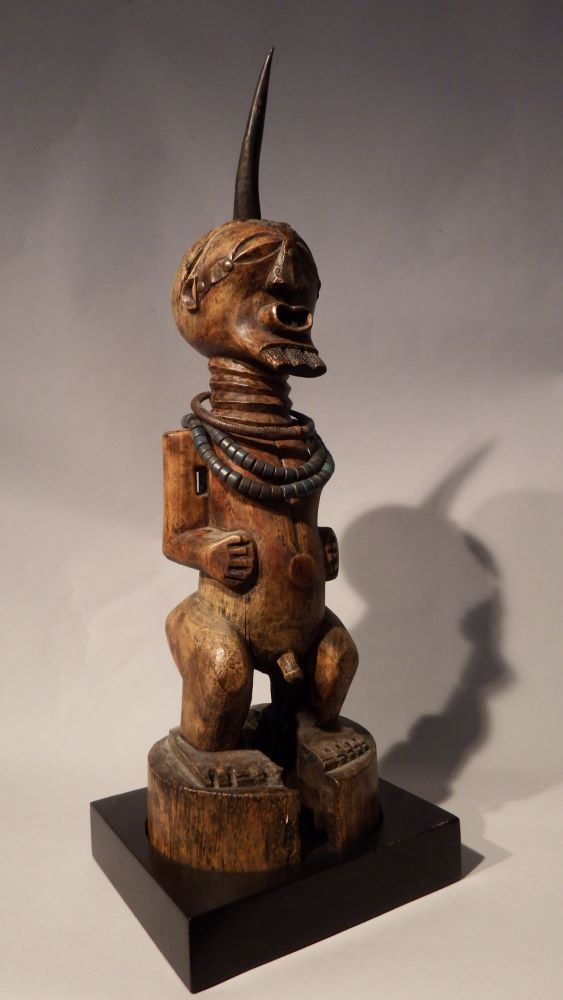Object Title: Songye Power Figure
Materials: Wood, animal horn, reptile skin, and beads.
Country: Democratic Republic of Congo
Cultural: Songye
Date Created: 20th Century


Object Title: Songye Power Figure
Materials: Wood, animal horn, reptile skin, and beads.
Country: Democratic Republic of Congo
Cultural: Songye
Date Created: 20th Century
The overwhelming majority of Songye figural sculptures were created with the intent of influencing the forces of nature through the powers residing in the carved image. Called nkishi by the Songye (minkishi in plural), these figures were made to protect and aid the individual, family, or community.
Minkishi were created by the Songye in several sizes. The largest and most notable were figures for the benefit of an entire village or community and were over 20” in height. Such figures were considered dangerous by the community and handled only by ritualists who had experience with the powerful forces at work in the figures. Often community figures were entrusted with the task of protecting or increasing fecundity in the village, and for keeping epidemic illness away.
By contrast, the figures created for individuals or families were made by a ritualist to remedy a specific problem or ailment such as an illness or unsuccessful period of hunting or farming.
To the Songye, the figure was simply the ‘receptacle’ for the magical ingredients that would be added to the image by a ritualist –These empowering materials were called bijimba in kiSongye, and were disparate organic and inorganic materials, referencing the power of their source via sympathetic magic; parts of birds of prey, arrowheads, and stones or dirt from a grave of a notable trapper may go into the charming material of an nkishi used to increase the success of the hunt, for example. Once completed, the charm material would be inserted into cavities in the figure’s head or a horn inserted in the head as in the present case, or wrapped around the figure in small bundles often made of reptile skin – one remaining now around the present figure’s neck.
Once the figure was no longer deemed efficacious, it would be disposed of; often the charm would be removed and destroyed by a ritualist, leaving only the carved figure, which now had no value to the Songye at all, as it no longer had any functional purpose.
Exhibition History:
In Memoriam – Bonnie Terrill Ross (1956-2022). New York: QCC Art Gallery of CUNY, October 12, 2023, to February 16, 2024.